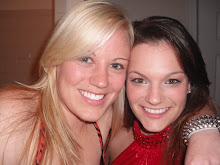My final portfolio after realizing that I, Kimberly Starr, am a filmmaker!
IT'S A BEAUTIFUL DAY
My first attempt to become a filmmaker commenced with a music video to the U2’s popular tune, “Beautiful Day”. My best friend from home, Sara, came to visit me, and she is a wonderful painter, therefore, the perfect music video setting was formed. She painted a beautiful and mystical tree on the wall in my bedroom, and then we took a journey around South Street in Philadelphia, and filming the day.
Armed with knowledge from Walter Murch’s novel, In the Blink of an Eye, I felt confident in my filmmaking capabilities. However, I soon realized I needed a little bit more experience after viewing my first music video draft. A few things needed to be corrected. After listening to the feedback from my peers, everyone agreed to add more of Sara actively painting on my wall, and to place it throughout the music video, and show her final product at the end. It was also known that there should be less scenery, and more of a story for the audience to become engaged and connected with.
Here is the video for my first draft:
Beautiful Day from kim starr on Vimeo.
For the final Beautiful Day product, I added Sara’s painting into different areas of the video, and specifically placed them during the chorus, in between scenes, and toward the end. I also took out the ending with the group of friends in my apartment, because it did not tie into the main theme of the video.
With the help of my classmates, I was able to see that adding the footage and placing it in different spots to make it more creative and enticing for the viewer.
The final video for the music video:
A world without the internet
Our next project was a group project, and our group decided to run with the thought of an 'internet-less world', and what would happen.
The rough draft
Untitled from kim starr on Vimeo.
The final 'Internetless' video follows exactly what our classmates told us to change:
the sound
more 'facts' about the future in an internet-less world
and a meaningful question at the end
In order to accomplish this, we added more 'facts', such as the stock market crash, the decline of college graduates, and how the ease of websites such as Mapquest or Google Maps - which are used multiple times a day by many people, are no longer available. However, we did not want to persuade our audience; instead, we decided to show the positive and negative aspects for an internet-less world, and allow the audience to decide if they are agree or disagree with such a thought. Therefore, we ended our video with the question, "Are we better off in an internet-less world?"
The final look into an internet-less world
An internet-less world.. dun dun dunnn from kim starr on Vimeo.
After watching the video - do you agree?
TEDxSJU
The final video took me on a more creative journey, personally, because it had to be fun, interesting, attention-grabbing, and most of all - to get the student body to come see TEDxSJU!
My first draft was definitely rough. I wanted to begin with someone 'freaking out', and then telling the viewers of the video to relax, and come see TED talks at SJU.
Rough first draft
Untitled from kim starr on Vimeo.
Thanks to my fellow classmates, they told me they liked the idea, but that a description of each of the speakers is needed.
I completely agreed with them. Therefore, in order to make it eye-catching, I started the buffer with a famous YouTube video, also known as "The Greatest Freakout". I kept the original idea of telling people to 'Relax, and attend TEDxSJU'. Finally, I added a short description for each of the speakers, so watchers can see who is coming, and why this would be a great even to attend.



